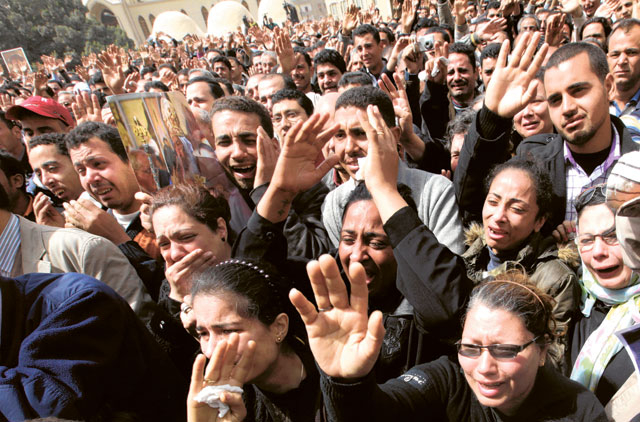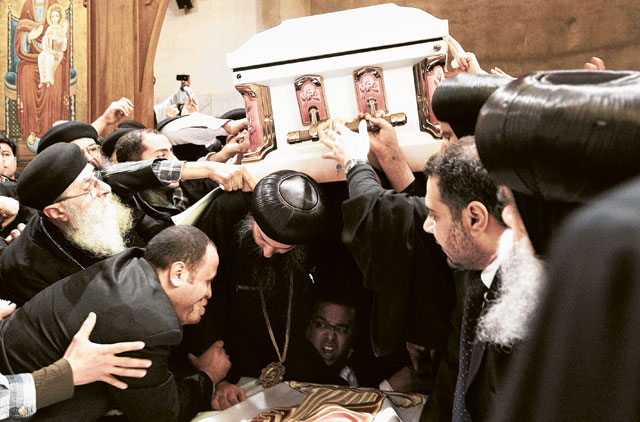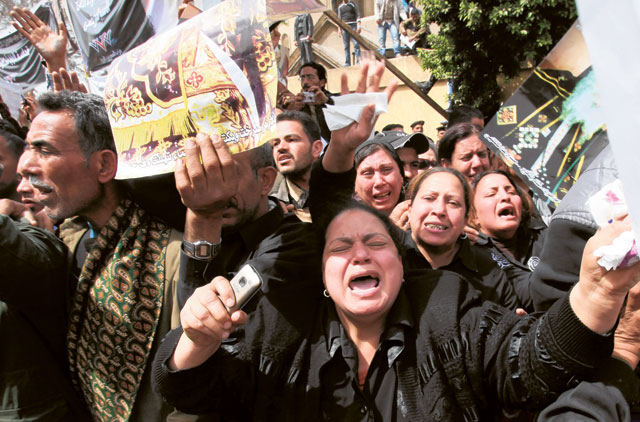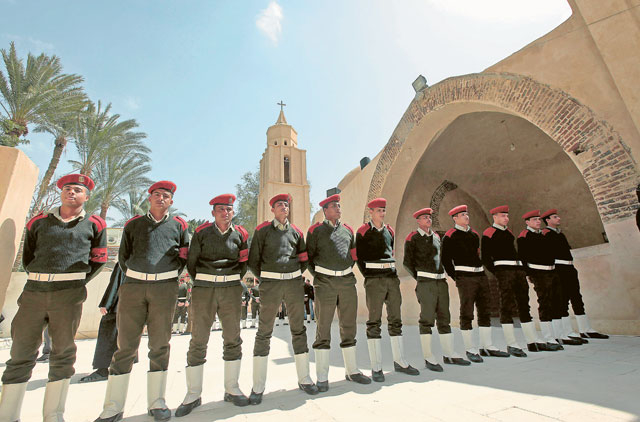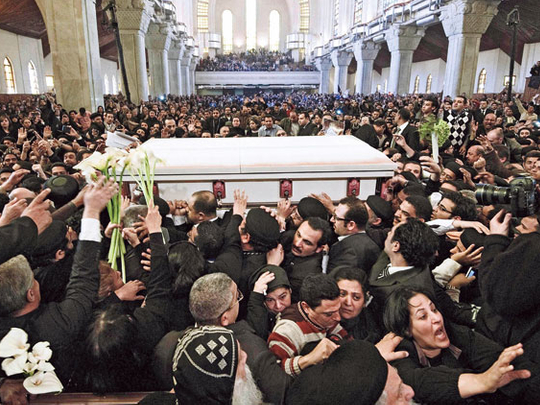
Cairo: To Pope Shenouda III, the late head of Egypt's Coptic Orthodox Church, the St Bishoy Monastery in northern Egypt had a special allure. On deciding to become a hermit in 1954, Shenouda, born Nazeer Gayed, spent six years in a cave inside the fourth century monastery.
Following his enthronement as the Coptic Church's 117th pope in November 1971, Shenouda chose the monastery as his papal residence and showed interest in developing and expanding it.
"At the tough times that faced the Church under his papacy, he used to go into retreat inside the monastery, praying and seeking support from God," Father Avraym of the monastery, which is located around 100 kilometres from Cairo, said.
Shenouda, who died on Saturday at the age of 88, was buried in the monastery yesterday, according to his wish recorded in a written will.
In exile
In September 1981, Egypt's then president Anwar Sadat exiled Shenouda to the monastery after the latter refused to bless Egypt's peace treaty with Israel signed in 1979. Shenouda also spurned Sadat's call to allow Christians to make a pilgrimage to Israel-occupied Jerusalem. "Egypt's Christians, like its Muslims, will not go to Jerusalem before it returns to its original owners — the Palestinians," Shenouda III was quoted as telling an angry Sadat. "The Copts will not be used as a locomotive of the normalisation train [with Israel]," the pontiff added.
"It was in the St Bishoy Monastery where Pope Shenouda wrote his book Unleashing the Soul when he was exiled for 36 months by Sadat," Father Wissa Al Shenoudi, a disciple of the late pontiff, said.
Sadat's successor Hosni Mubarak released Shenouda and reinstated him.
The monastery itself was founded by St Bishoy (320-417 AD). The monastery has five churches, the main of which is named after Bishoy himself.
Under Shenouda's 41-year papacy, the monastery extended as hundreds of acres were acquired and mostly cultivated. The ancient buildings were renovated while cattle breeding and poultry facilities were built. Three reservoirs for drinking water, three large units for monk cells, a library, a guest house and conference buildings were also constructed.
"The monastery occupied a special place in the heart of Pope Shenouda. He also regarded its founder as his spiritual interceder," Father Avraym said. "Since he became a pontiff, he used to come to the site for worshipping," he added.
On several occasions, Shenouda went into seclusion in the monastery when crises occurred during the 30-year era of Hosni Mubarak.
One well-known occasion was in late 2004 when thousands of angry Christians demonstrated in Cairo after the wife of a priest disappeared after reportedly embracing Islam. The Christian protesters accused the Egyptian police of being involved in the incident as part of an alleged plan to convert Coptic Christians to Islam. Shenouda returned to his residence in Cairo only after the woman had reportedly been handed back to the Church.
Protest against arrests
Another occasion was three months before Mubarak's toppling. An angry Shenouda retreated into the monastery to protest the Egyptian authorities' arrest of several Christians following clashes with the police over the building of an unlicensed church in Giza, south of Cairo. According to Father Sarabamoun, the public relations manager at the St Bishoy Monastery, the last time Shenouda came to the place was in January 2010 in the wake of a deadly attack on a church in the coastal city of Alexandria.


